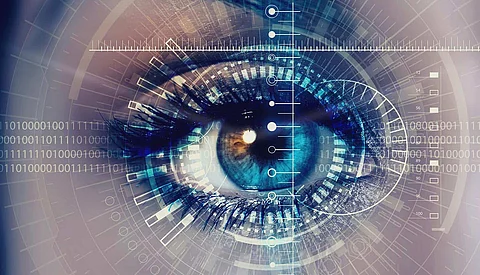

No one denies that something needs to be done to protect our online data. From January to March of 2019, over 1.9 billion records have been exposed. While businesses were the most commonly hacked, educational and medical institutions were also victims of fraudsters.
Besides including sensitive medical information, the stolen data included names, passwords, addresses, and credit card numbers. Those wanting to wreak havoc on your accounts had plenty of information available to let them succeed.
Three years ago, it was estimated that one in 15 people would be a victim to identity theft. Of course, this is expected to increase.
What can be done to curtail this growth of online fraud? Some companies, institutions, and agencies are turning to biometric authentication to identify people. Over the last several years, companies have been scrambling to improve the technology behind biometric authentication. We are now at the point where such authentication can be trusted.
First, let's discuss the types of biometric authentication. Then, let's discuss why this type of security can be trusted, even with the most sensitive of information. Finally, we will explain how companies are turning to biometric authentication to allow online users to open accounts.
Biometric identification can include a whole host of technologies. It can consist of iris or fingerprint scans that we have seen on James Bond movies for decades. But it can also voice recognition and facial recognition software similar to what is used on iPhones. As technology improves, such forms of identification become more sophisticated.
If you are a sci-fi fan, you may have concerns regarding biometric identification. You may think of those novels you read in high school English class where the government gained control of all aspects of life and was not to be trusted. Perhaps, in part, because of these works of fiction, users still struggle with trusting this type of technology.
The reality is that we can't afford not to trust biometric identification. As technology advances, it is becoming clear that biometrics are safer than the old system of log-ins and passwords.
We say that biometric identification is a safer alternative, but caution must be given. Companies need to be able to share how this data is stored. They also need to be able to communicate what it is used for, so people can make informed decisions. This educational process is necessary anytime new technology is initiated.
For example, some fingerprint scanning software may not store all of the data points of the fingerprint. This means that even if that fingerprint data is somehow breached, the criminal would not be able to replicate the print for nefarious intent.
Other times, biometric information is only stored on the owner's device. Think about how the facial recognition on your iPhone works. Apple does not save a scan of your face. It is only used to unlock your phone and its apps.
To return to our first point, we must learn to trust biometric data. Traditional logins and passwords have not proven effective. They are discovered by criminal elements sometimes because of a user's error, but more often than not, even careful users may become victim to such data breaches.
We never know when a worldwide global pandemic will alter the way companies have to do business. More than ever before, companies must have a secure online presence in order to serve their customers. How can companies promise that they will be careful with their customer's data when we have all been victims in the past?
One way that companies can better serve their customers is by using biometric data to make sure they know who their customer is.
To open an account, the customer must submit a quality scan of a government-issued photo ID. This photo will be compared with a database of thousands of IDs to see whether any red-flags appear on the validity of the document.
Next, the customer must take a selfie and submit it to the company. Technology is in place to ensure that the selfie is that of a live person and not of a photograph of a person. Facial recognition software scans the person's face to make sure it matches the image on the ID.
After the company is confident that the customer is who she says she is, they can then continue with whatever background and credit checks they deem necessary for their industry. The company wins because they have found a new client. The client wins because they know they are working with a company that values online security.
Like working with any technology, it is ever-evolving. Policies are written and rewritten to change with the times. It should be considered a work in progress.
Even though customers may still find a way to open accounts in other people's names, no matter if biometric identification is used or not, we have still come a long way to improve digital security.
Join our WhatsApp Channel to get the latest news, exclusives and videos on WhatsApp
_____________
Disclaimer: Analytics Insight does not provide financial advice or guidance. Also note that the cryptocurrencies mentioned/listed on the website could potentially be scams, i.e. designed to induce you to invest financial resources that may be lost forever and not be recoverable once investments are made. You are responsible for conducting your own research (DYOR) before making any investments. Read more here.
